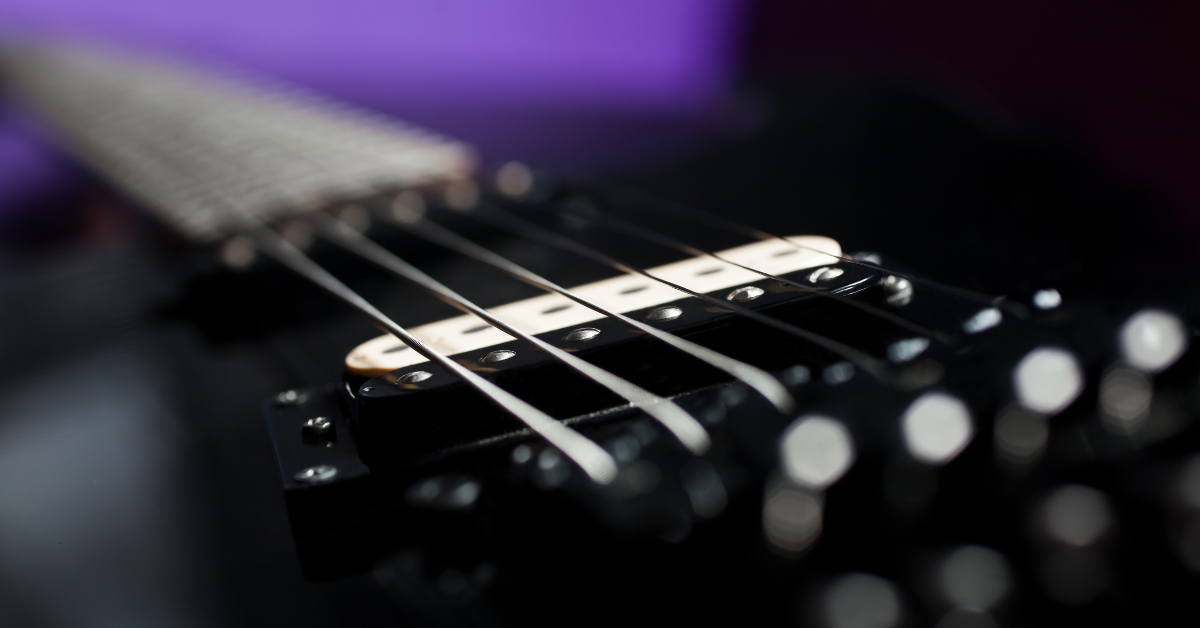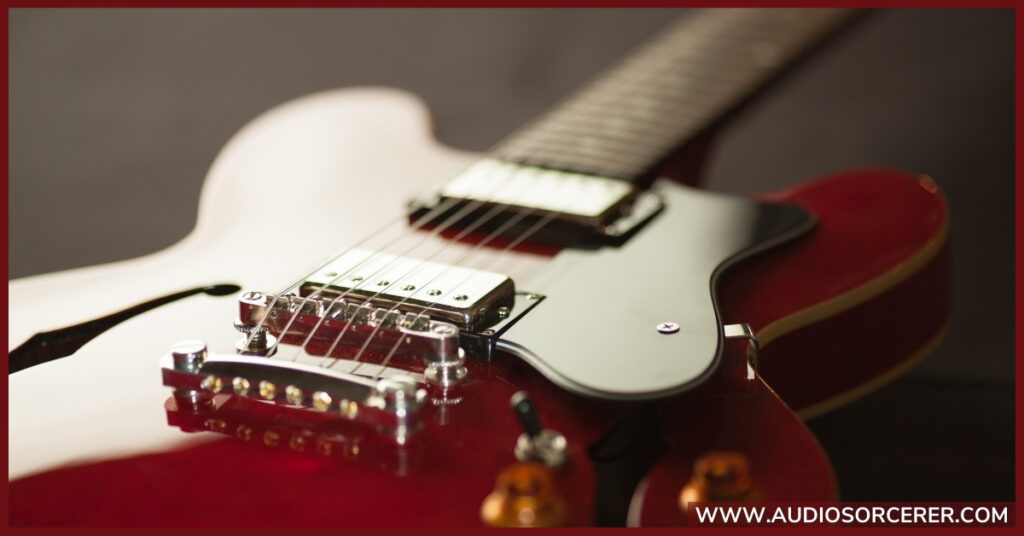
Guitar string gauges, in a nutshell, are how thick or thin the strings are. Just like picking the right shoes for your favorite sport, choosing the right string gauge can make a huge difference in how your guitar sounds and feels when you play. In this guide, we'll break down everything you need to know about string gauges, so you can find the perfect fit for your rockstar style!
Imagine your guitar strings are like tiny rubber bands. The thicker the rubber band, the harder it is to stretch, right? String gauge works the same way. It's a measurement of how thick the strings are, usually written in thousandths of an inch. For example, a "10 gauge" string is 0.010 inches thick, while a "9 gauge" string is even thinner at 0.009 inches.
These tiny differences in thickness might seem small, but they have a big impact on your guitar. Thinner strings, like those "9s," are easier to bend and press down, making them great for beginners or players who like to bend notes a lot. They also tend to sound brighter and twangier.
On the other hand, thicker strings, like "11s" or "12s," are harder to bend and require more finger strength. But they also have a warmer and fuller sound with more sustain (meaning the notes ring out longer). These are often preferred by players who play heavier styles of music or use lower tunings.
Here's a simple string gauge chart that outlines how thickness correlates with the auditory impact:
| String Gauge | Tone Quality | Playability |
|---|---|---|
| Lighter Gauges (.008-.042) | Bright, snappy | Easy to bend, less finger fatigue |
| Medium Gauges (.009-.046) | Balanced, versatile | Manageable tension for most styles |
| Heavier Gauges (.010-.052) | Warm, full-bodied | Requires more hand strength, increased sustain |
Related Article: The Top 5 Best Guitar Strings for Acoustic (2024)

Finding the perfect string gauge is like finding your favorite pair of jeans: it depends on your personal style and what feels comfortable for you. Here are some factors to consider:
If you like to tune your guitar down, you'll need thicker strings to maintain proper tension and avoid neck warping. Thinner strings become too loose and floppy at lower tunings, making them difficult to play and sound out of tune.
Ultimately, the best string gauge is the one that feels most comfortable and sounds best to you. Experiment with different gauges to see what you like! Some players even mix and match gauges within a set, using a thicker gauge for the lower strings and a thinner gauge for the higher strings.
While string gauge is a major player in sound and playability, there are a few other things to keep in mind:
Guitar scale length refers to the distance between the nut and the bridge. Longer scale length guitars (like some Les Pauls or baritone guitars) can handle thicker gauges better, while shorter scale length guitars (like most Stratocasters) might benefit from lighter gauges to avoid feeling too tight.
Guitar action refers to the height of the strings above the fretboard. Lower action guitars might require lighter gauges to avoid fret buzz, while higher action guitars can handle thicker gauges without issue.
Different string materials, like nickel, steel, or wound strings, can also affect the feel and tone of your guitar. Experimenting with different materials can help you find the perfect combination for your preferences.

Here are some examples of popular string gauges used by notable guitarists:
It's important to remember that these are just examples, and many guitarists use different gauges depending on their personal preferences, playing style, and tuning
Related Article: Roundwound Vs Flatwound: The Great Guitar String Debate
Generally, lighter gauges (9s or 8s) are recommended for beginners as they are easier to bend and fret. This makes them more comfortable to play and helps you learn basic techniques.
Absolutely! Some players prefer a thicker gauge on the lower strings for a fuller sound and sustain, while using a thinner gauge on the higher strings for easier bending. Experiment and see what combination feels and sounds best for you.
This depends on how often you play and how sweaty your hands are. Generally, it's a good idea to change your strings every 2-3 weeks for regular playing.
This could be due to several factors, including using gauges too thin for your playing style or tuning, using low-quality strings, or having sharp edges on the nut or bridge that are cutting the strings. Experiment with thicker gauges or consult a guitar technician for further diagnosis.
Electric guitar strings tend to be lighter in gauge compared to acoustic guitar strings due to the electromagnetism used for sound production allowing lighter strings to produce a full tone. Acoustic guitars, which rely solely on string vibration, generally benefit from slightly heavier strings that provide a louder, richer sound.
Choosing the right string gauge is an important step in getting the sound and feel you want from your guitar. Remember, there's no one-size-fits-all answer, so experiment with different gauges and consider your playing style and preferences. With a little exploration, you'll find the perfect strings to unlock your inner rockstar!
If you found this guide helpful, please consider subscribing to our blog for more music production tips, product reviews, and buying guides. Also, you can support new content by contributing to our tip jar.
"Some of the links within this article are affiliate links. These links are from various companies such as Amazon. This means if you click on any of these links and purchase the item or service, I will receive an affiliate commission. This is at no cost to you and the money gets invested back into Audio Sorcerer LLC."